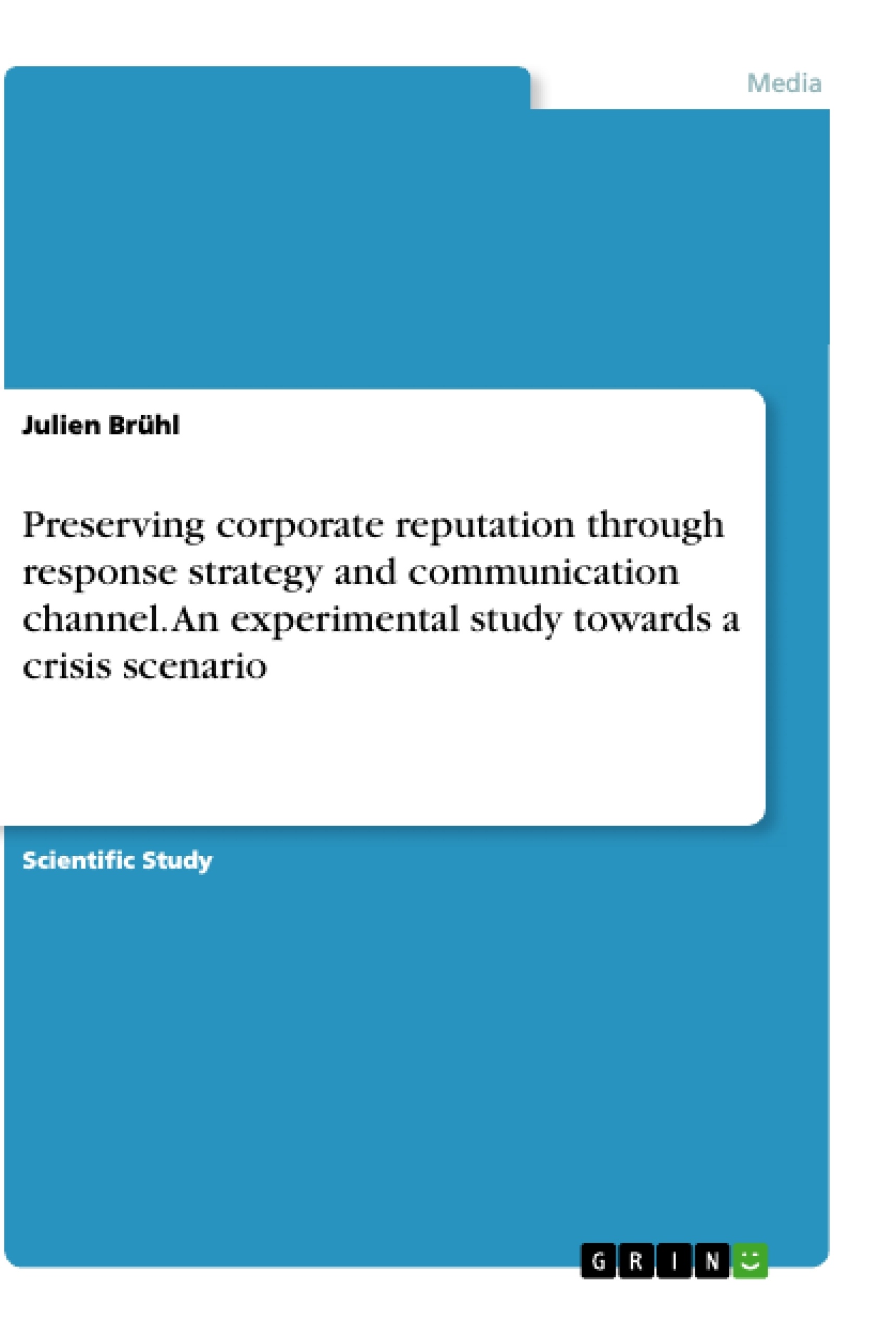Since Schultz et al. discovered that “the medium had an effect on the organisational reputation”, our study grasps upon these aspects by analysing the perception of varying messages through a social media site and a press release. Here, “electronic word of mouth communications, which are able to reach a vast number of people in a short period of time” might be relevant. Crises threaten the organisation’s attractiveness and trustworthiness. Consequently, a solution is to prevent worse, with respect towards the manifold stakeholders.
This spring, when COVID-19 peaked, Bottega Veneta decided to have a fashion show at a club in Berlin. Thus, celebrities were invited and even had a party afterwards. However, the label denied commenting on the accusations of acting unethically. This example illustrates one of the few existing crisis response strategies, namely the denial strategy. Also, the communication channel is an essential aspect.
Inhaltsverzeichnis (Table of Contents)
- 1. Introduction
- 2. Methods
- Design
- Participants
- Procedure and stimuli
- Manipulation checks
- Measures
- 3. Results
- 4. Discussion
- 5. Conclusion
- References
- Appendix
Zielsetzung und Themenschwerpunkte (Objectives and Key Themes)
This research paper aims to understand the influence of communication channels and crisis response strategies on a company's reputation after a crisis. Using a survey-embedded online experiment, the study investigates how different communication channels and response strategies affect public perception in a simulated crisis scenario.
- Influence of communication channels on reputation management
- Effectiveness of different crisis response strategies
- Impact of crisis involvement on public perception
- Application of situational crisis communication theory
- Analysis of social media and traditional media channels in crisis communication
Zusammenfassung der Kapitel (Chapter Summaries)
- Chapter 1: Introduction: The introduction presents the research question and hypotheses, drawing upon existing literature to highlight the importance of communication channel and response strategy choices in crisis situations. The study uses a fictional scenario involving an LGBTQ+ discrimination incident at a fast-food restaurant to investigate these factors.
- Chapter 2: Methods: This chapter details the experimental design, participant selection, procedure, and measures used in the study. It includes information about the manipulation checks employed to ensure the effectiveness of the experimental stimuli and the reliability of the scales used to measure crisis involvement and corporate reputation.
Schlüsselwörter (Keywords)
This research paper explores the intersection of crisis communication, corporate reputation, social media, and response strategies. Key areas of focus include the role of communication channels, such as Twitter and press releases, in mitigating reputational damage, the effectiveness of denial and rebuilding strategies in crisis scenarios, and the impact of crisis involvement on public perception. This research applies concepts from situational crisis communication theory to investigate how organizations can best manage their reputation in the face of a crisis.
- Citar trabajo
- Julien Brühl (Autor), 2021, Preserving corporate reputation through response strategy and communication channel. An experimental study towards a crisis scenario, Múnich, GRIN Verlag, https://www.grin.com/document/1043100



